This article follows up my previous article that talked about March of Machine for cube, with today’s article talking my take on the best cards (or at least most interesting) for cube from March of the Machine: The Aftermath and March of the Machine’s Commander decks.
Here are my thoughts on the hits from those releases:
WHITE
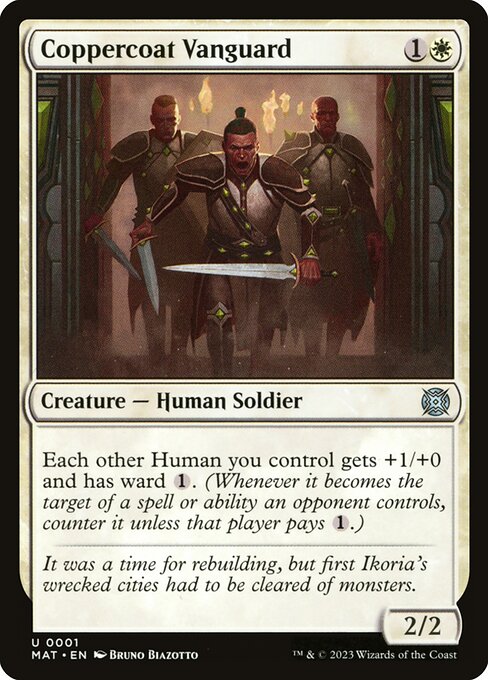
In terms of raw power, Coppercoat Vanguard is easily the best card in the set since it provides so much of a boost to humans on a 2-mana lord. In terms of creature types to support in cube, Humans are one that come pretty naturally since you don’t have to play with cards that are awful on their own—like traditional lords (Goblin Warchief, Merfolk Reejerey, etc). And this is one of the better payoffs, should you choose to go in that direction for white aggro in your cube.
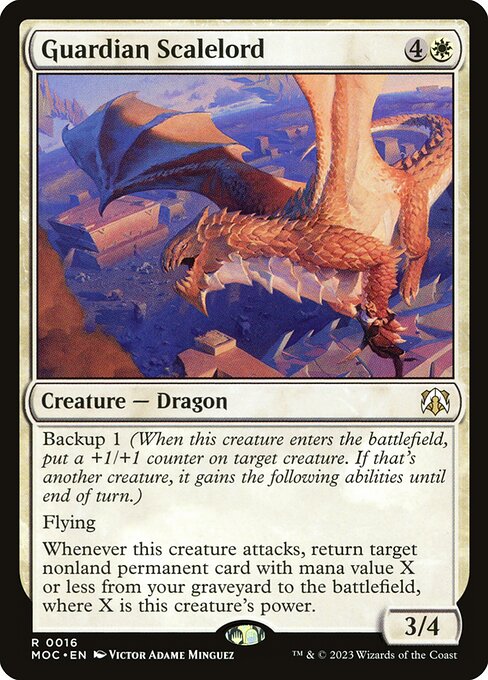
2023’s power level Sun Titan, I do like that this emulates Sun Titan’s ETB trigger both by backing another creature up and or by attacking itself. Since this type of card is generally played with other big creatures in a midrange shell, it will usually recur something decently sized when the trigger first happens.
Still, I think we can do better these days in cube since it does have some middling stats and immediate impact if there isn’t something else to back up.
BLUE
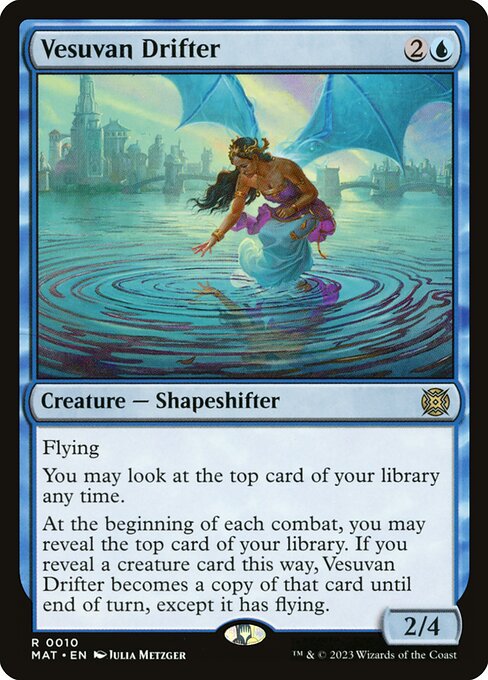
Vesuvan Drifter is one of the highest at 3-mana payoffs since it can cheat mana costs by becoming a giant monster if you have one hiding on top of your library. Library manipulation can help to make this more consistent and like Chrome Host Seedshark, it’s not bad at holding down the fort as a 2/4 flier for 2U. But this comes to mind as mostly a cheat supplement card rather than something to rely on, since it can also reveal misses.
Still, being able to look at the top of the library is subtly useful for being able to manipulate via shuffles/scry, or to assist in long-term game plans—but I wouldn’t play this unless you’re looking to enable cheat-y strategies in your cube.
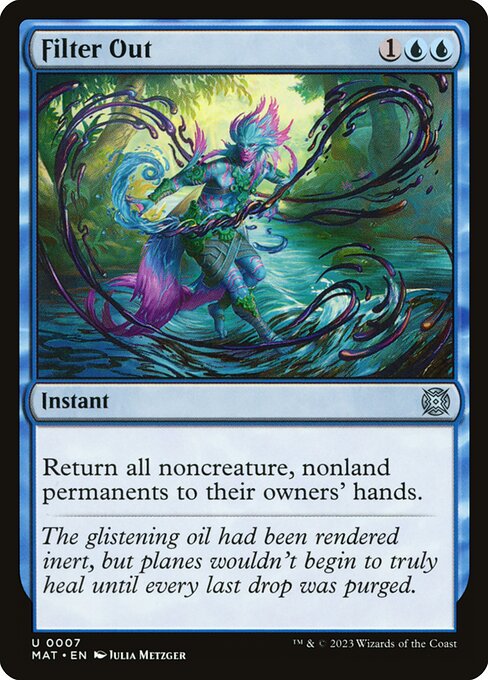
Filter Out is mostly a sideboard card against things like mana rocks and Planeswalkers. The fact that it doesn’t hit creatures is a big drawback in an era when cubes are getting more powerful creatures by the set (and The Lord of the Rings: Tales of Middle-earth being no exception) and having cards that don’t deal with creatures can be a rough sell since bounce spells are already on the back foot by being naturally card disadvantage.
BLACK

Often, these types of cards suffer because they’re not great on rate (although Soulflayer wasn’t bad on rate thanks to Delve, either, but its underuse may be due to weird expectations.)
Still, this coming down as a 3/3 is a big help, and generally having a keyword is nice. Getting an evasive keyword is a big help, since it helps the Urborg Scavengers safely snowball when there’s a lot of ground defense. One of the better cube three drops we’ve gotten lately, and it’s nice that it’s also maindeck graveyard hate if graveyard strategies are a thing in your cube.
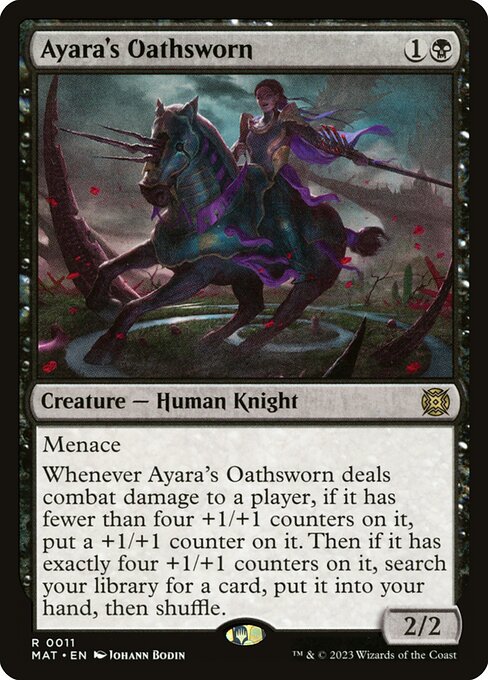
Ayara’s Oathsworn performed decently when I tried it out in my cube—usually it played the part of a 2/2 menace, which isn’t bad on-rate for a difficult-to-block beater, that would usually grow to a 3/3 and occasionally bigger. It never tutored for a card, but its average case as a beater was fine.
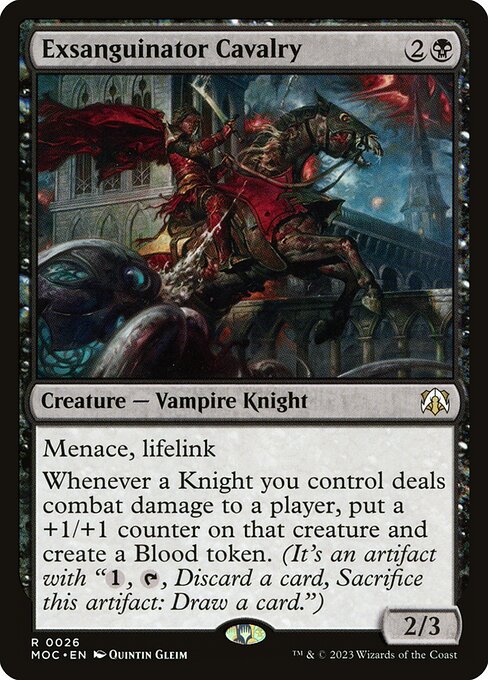
Exsanguinator Cavalry is difficult to block, which is nice, but it’s harder these days to justify playing a Vampire Nighthawk in a cube due to its relatively low board impact. Even if there’s a possible knight theme in Wilds of Eldraine to boost this, Exsanguinator Cavalry is mostly a standalone card (with some slight nods to BW) but it’s nice that it gets bigger and kinda draws a card when it connects. I haven’t had many reps with this but my gut is that this is better than it looks.
RED
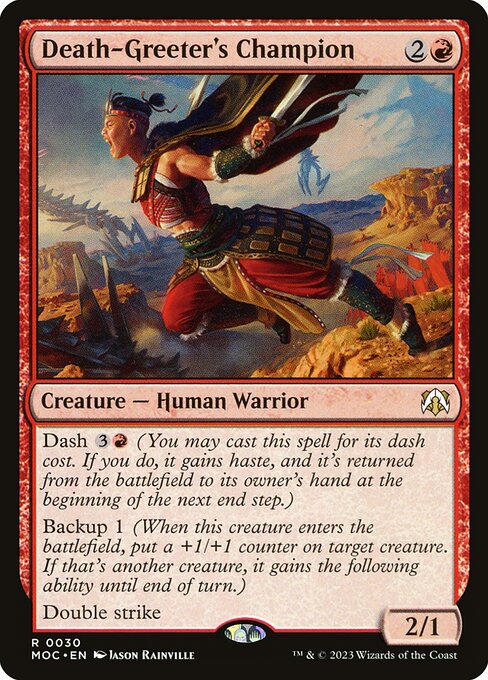
This is pretty good as a pile of stats for cubes that are looking for one.
Rate is nice as a three-power double striker for 2R, when we’d usually only two power of double strike for two mana. When I tried this out in cube, I was surprised at how often its various “modes” mattered—as a 3/2 double strike for 2R when you just needed a big pile of stats, something to dash out for a ton of burst damage by dashing this out, casting it and backing something else up to crash in for a lot of damage or even dashing and slowly building up a board.
This undefeated cube deck utilized it well. Surprise, it’s Mono-Red!
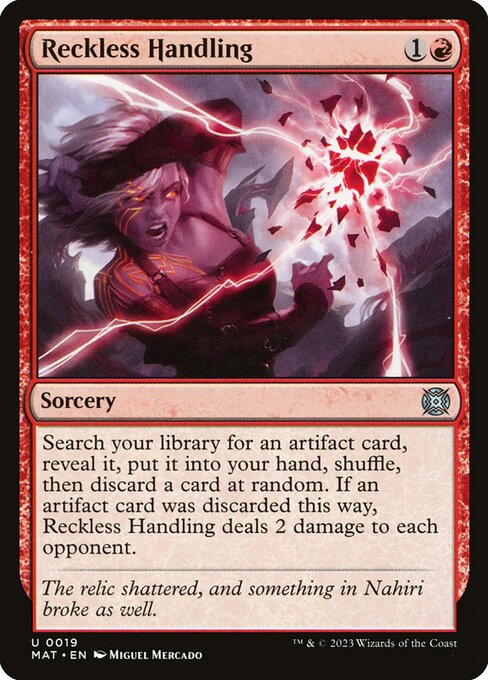
What’s weird about Reckless Handling is that, because you can’t rely on hitting either mode of this, you’d have to be a deck that is comfortable with dealing two damage to something as a floor, but won’t be something that you can count on either. It makes it very contextual, but unlike something like Change the Equation, it isn’t even that great if the stars align.
GREEN
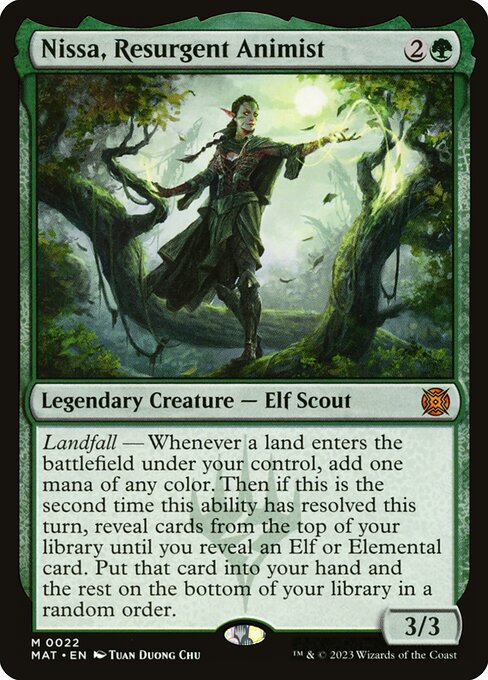
I found that Nissa, Resurgent Animist was mediocre if you don’t have a lot of ways to get multiple lands out in a turn, a la fetches and green land ramp like Rampant Growth and Cultivate, which honestly aren’t even great in cube (things like Wild Growth and Utopia Sprawl are just better), and the floor of her being a three mana Lotus Cobra was just…ok.
It’s really not something writing home about, unless a deck happens to have a ton of fetches in their deck—in singleton cubes, cards like the “bad fetches” (Bad River, Krosan Verge) help since it helps hit the critical mass to make this work, since getting an Elemental is nice (the pitch elementals like Fury are just so absurd) and getting a random elf isn’t bad.
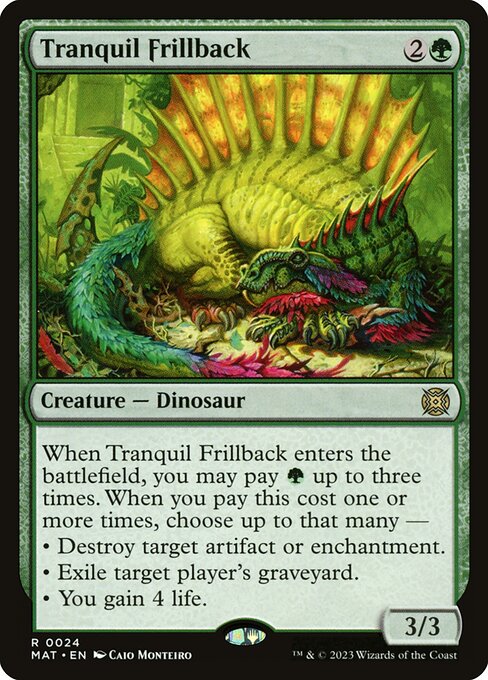
Historically, cube has always been a format friendly to Naturalizes, due to the historical nature of the format encompassing blocks that had really really good artifacts, like Kaladesh and the various sets that took place on Mirrodin/New Phyrexia. Cubes historically even have sections for cards (WUBRG, Artifacts, Lands, Multicolor) so artifacts have generally had a strong representation in cube, even those without power, as even old cubes had cards like Keldon Vandals hanging around since they shattered things, which sometimes hung around for longer than they should have.
With creatures getting better over the years, these got powercrept out of cubes, so they naturally had to be better to keep up.
Does Tranquil Frillback?
…sorta.
It’s been decent in my cube since I’ve been trying it out, generally as a 2GG 3/3 that kills an artifact, but it does have some matchup spread by being able to gain life or—in a pinch, exile a graveyard (although I don’t think I ever saw that happen.) I honestly don’t think it’s that much better than Foundation Breaker, but I think it’s a nice little flexible tool to have in a cube box.
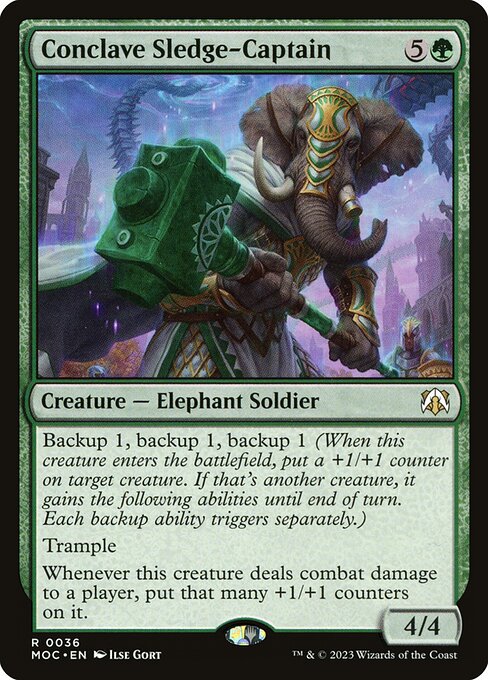
Overruns have generally had a weird time in cube, since they’ve historically been seen as “broken in limited” and nowhere near that in cube—generally being best if stapled onto creatures like Craterhoof Behemoth, Earthshaker Giant, and Great Oak Guardian (kinda.) I mainly see Conclave Sledge-Captain as an Overrun first, and only really caring about the trample, with the extra text being extra—since the counter thing isn’t really doing all that much and feeling a bit win-more, but it does help to push pressure.
Being able to be a six mana 7/7 trampler isn’t awful as a floor either. But still, I think green can do better.
OTHERS
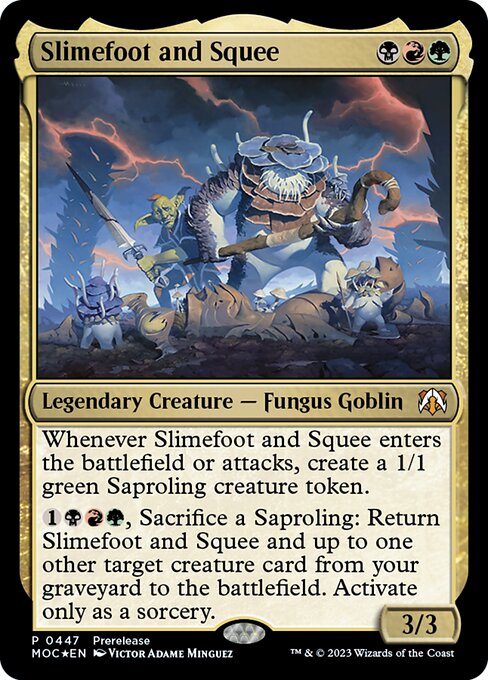
If you’ve been playing Historic on Arena, you’ve most likely been seeing BinarySoloist’s mad creation on the ladder, which features a reanimation plan but a remarkably fair game plan thanks to the Jund duo of Slimefoot and Squee. Like in that deck, it just does so much as four power upfront and something can just randomly reanimate something, so long as the opponent doesn’t crowd control your saprolings (additional saprolings aren’t really required for this either.)
One of the better Jund cards for us these days, as a way to supplement Jund’s game plan of grinding and attrition.
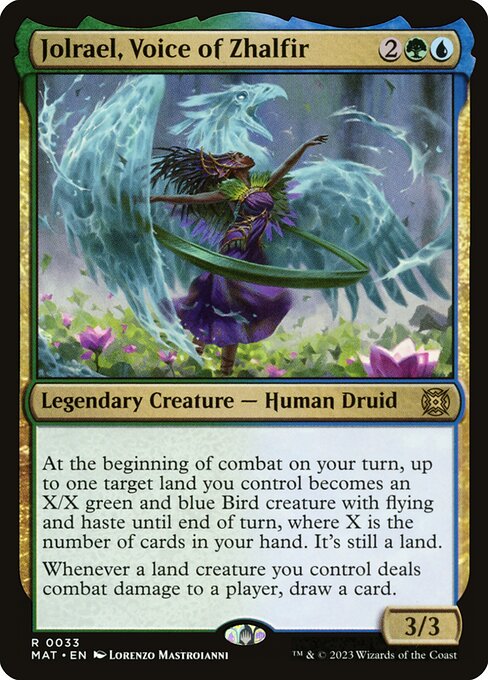
Jolrael, Voice of Zhalfir is an excellent midrange beater that I found usually played the part of Thieving Magpie with haste since it was the only land creature that was dealing damage to a player, but it did suffer by virtually costing five for this mode (of casting it, turning a land into a bird.) Still, it worked well since the birds were generally 2/2s with flying, and were a nice way to close out the game. Hardly Oko/Uro tier, but still solid, but smaller lists may have a harder time including something that’s not busted in Simic.
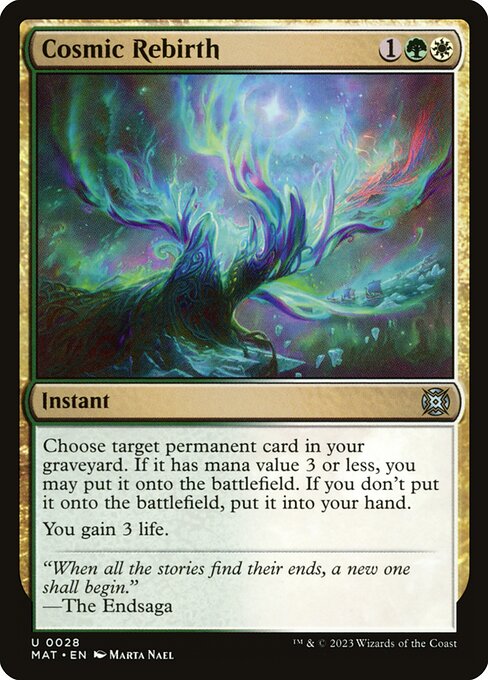
An issue that I’ve found with a lot of Selesnya cards in cube is that they don’t really offer much different than what are in its colors—mainly acting as beef in a color that already has beef…except that it’s slightly more efficient. Cards like Cosmic Rebirth help the deck operate on an axis that isn’t one that GW traditionally works in.
Nature’s Spiral effects have always been worse than they look, but I’ve liked this since it’s an instant speed and can occasionally get people by acting as instant speed mana acceleration via getting fetches that naturally put themselves in the graveyard, or just getting something to block/attack on your turn, or to just get a Planeswalker back to your hand and the lifegain isn’t irrelevant, either.
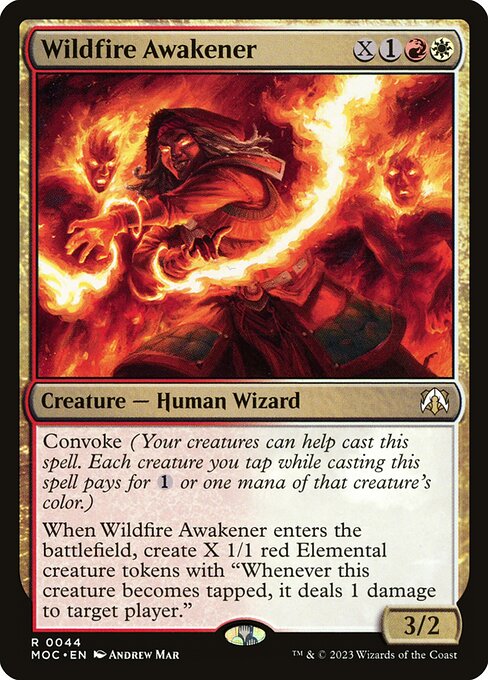
In this article and in the last one, I never really talked about the “convoke tax” for cards—it’s generally about one mana when compared to s a card that doesn’t have convoke.
Like a lot of X spells, Wildfire Awakener card mostly works via flexibility—casting for 1RW for a 3/2 isn’t good, but I’ve liked it in decks that can use it to spam the board with elementals that have guaranteed Hellrider pings.
This undefeated cube deck is a good example—a meat-and-potatoes aggro deck that can cast it early if need be, but usually threatened a ton of damage if the opponent couldn’t just deal with it and its friends.
It may be a harder sell with Tales of Middle-earth since there are several *very* good Boros cards in that set to supplement Comet, Stellar Pup, but it’s still nice.
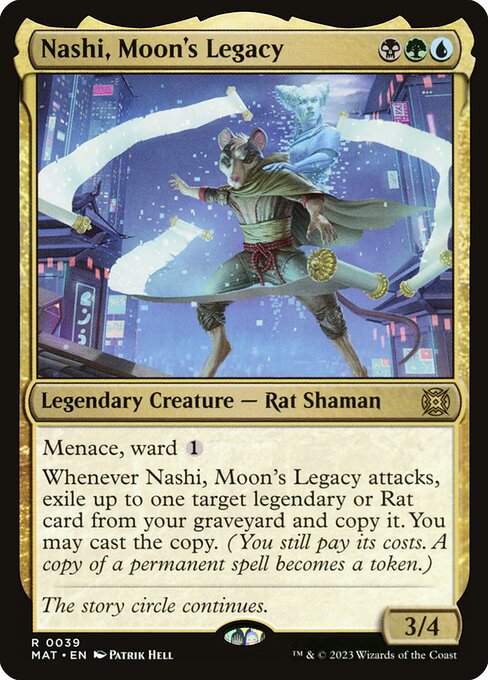
Ignore the additive distraction about the rats, this is mainly for recurring legends. With Tales of Middle-earth, “legends matter” is something that we’re able to support more organically in cube, and having menace helps it not just run into a big blocker.
Derek Gallen has it in his 2023 CubeCon submission and it looks like a real value beast there!
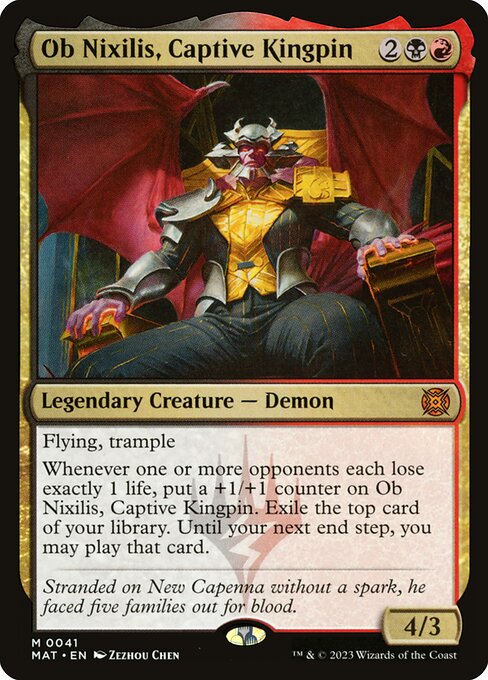
Unlike this set’s Samut and Pia, this Ob Nixilis, Captive Kingpin is a payoff card that requires some support but isn’t one that’s naturally unsupportable in cube. Like Ghyrson Starn, Kelermorph, it doesn’t trigger its trigger on its own but doesn’t require specifics that are hard to hit critical mass of in cube (you likely need at least six ways to make any of these playable in a cube deck) which—while incredibly hard to make work for Samut and Pia, isn’t the case with Ob Nixilis, Captive Kingpin since this works well in low-to-the-ground Rakdos decks that have (sometimes evasive) 1/1s lying around and/or dividable damage like Arc Trail or the myriad of Chandras that ping.
If you’re wondering where some cards from March of the Machine and The Aftermath are, I’ve discussed many of them in a blog post, with the “near hits” and along with more long-form bloggy-type thoughts.
Usman Jamil (he/him) has been creating Cube content since 2009 and created the first and longest running Cube podcast, The Third Power. He is a member of the Pauper Cube Committee and created the Ravnica Cube on Magic Online. His linktree is: https://linktr.ee/Usmantherad

